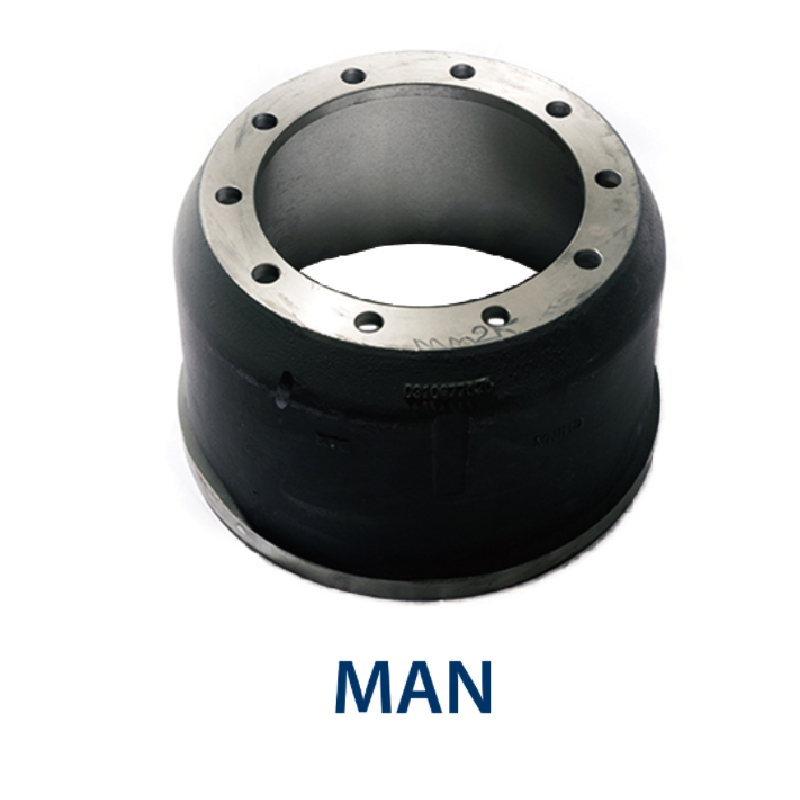Agosti . 13, 2024 17:57 Back to list
Understanding the Weight and Specifications of Car Brake Drums for Optimal Performance and Safety
Understanding Brake Drum Weight Essential Factors and Implications for Vehicle Performance
Brake drums play a crucial role in the braking systems of vehicles, particularly those equipped with drum brakes. These components are generally made from iron or aluminum, and their weight can significantly impact the overall performance and efficiency of a vehicle. Understanding the factors influencing brake drum weight and its implications can help manufacturers and vehicle owners optimize their braking systems.
What is a Brake Drum?
A brake drum is a cylindrical component that works in conjunction with brake shoes to create friction and slow down or stop the vehicle. When the brake pedal is pressed, hydraulic pressure forces the brake shoes against the inner surface of the rotating drum, generating the necessary frictional force. Because of this critical role, the design and weight of the brake drum must be carefully considered to ensure efficient braking.
Factors Affecting Brake Drum Weight
1. Material Composition The materials used in manufacturing brake drums are the primary determinants of their weight. Cast iron is the traditional material due to its excellent heat dissipation properties and durability. However, it is relatively heavy. On the other hand, aluminum drums are lighter and provide improved performance, although they may not dissipate heat as effectively as cast iron. The choice of material is, therefore, a balance between weight, heat management, and durability.
2. Size and Dimensions The dimensions of the brake drum—its diameter and width—directly correlate with its weight. Larger drums can accommodate more extensive brake systems, which may be necessary for heavier vehicles. Consequently, weight considerations must align with the vehicle's overall design and braking requirements.
3. Design and Engineering Advances in engineering and design have led to innovative brake drum designs that enhance performance while reducing weight. Engineers are increasingly employing computer-aided design (CAD) tools to create lightweight structures that maintain strength. The integration of modern materials and manufacturing techniques, such as composite materials, has further enabled the production of lighter brake drums without sacrificing performance.
car brake drum weight

Implications of Brake Drum Weight
1. Performance Efficiency The weight of the brake drum can influence a vehicle's overall weight distribution, which in turn affects handling, acceleration, and braking performance. Lighter drums can lead to improved response times, which is vital for sports and performance vehicles. Conversely, heavier drums could result in decreased acceleration and increased fuel consumption.
2. Heat Management Brake systems generate substantial heat during operation, and the weight of the brake drum can affect its ability to dissipate this heat. Heavier drums made from materials with better heat conductivity tend to manage heat more effectively, thereby preventing brake fade. However, the weight must be balanced against the need for lightweight components that enhance vehicle agility.
3. Wear and Longevity Heavier brake drums tend to wear out less quickly compared to lighter alternatives due to their robust construction and increased mass, which can absorb more heat during braking. However, lighter materials, when designed correctly, can also offer enhanced durability through advanced engineering solutions.
4. Cost and Accessibility The manufacturing of brake drums also involves considerations of cost. Lighter materials or more advanced designs might lead to higher production costs, impacting overall vehicle pricing. Consumers must assess the trade-offs between performance benefits and financial implications when selecting vehicles or replacement parts.
Conclusion
The weight of brake drums is a critical factor influencing vehicle performance, safety, and efficiency. As technology advances, manufacturers can explore new materials and design strategies that promise lighter and more efficient brake systems without compromising their functionality. Understanding the implications of brake drum weight helps in making informed decisions whether you are a vehicle manufacturer or an owner looking to optimize your vehicle's braking performance. As the automotive industry continues to evolve toward lighter and more efficient systems, the significance of brake drum weight will undoubtedly remain a central topic of discussion.
-
High-Quality Brake Drum MAZ – Durable Drum Brake Drum & Brake Drum and Brake Shoe Solutions
NewsJul.05,2025
-
High-Quality Brake Drum Iveco - Durable Drum Brake Drum & Brake Shoe Solutions
NewsJul.05,2025
-
High-Quality Brake Drum MAZ – Durable Drum Brake Drum & Brake Drum and Brake Shoe Solutions
NewsJul.04,2025
-
Brake Drum Man - High-Quality Drum Brake Drums & Brake Shoes for Reliable Performance
NewsJun.24,2025
-
High-Quality Brake Drum Kamaz – Durable Drum Brake Drum & Brake Shoe Replacement
NewsJun.10,2025
-
High-Quality Brake Drum Liza for Drum Brake Systems - Superior Durability and Performance
NewsJun.10,2025
